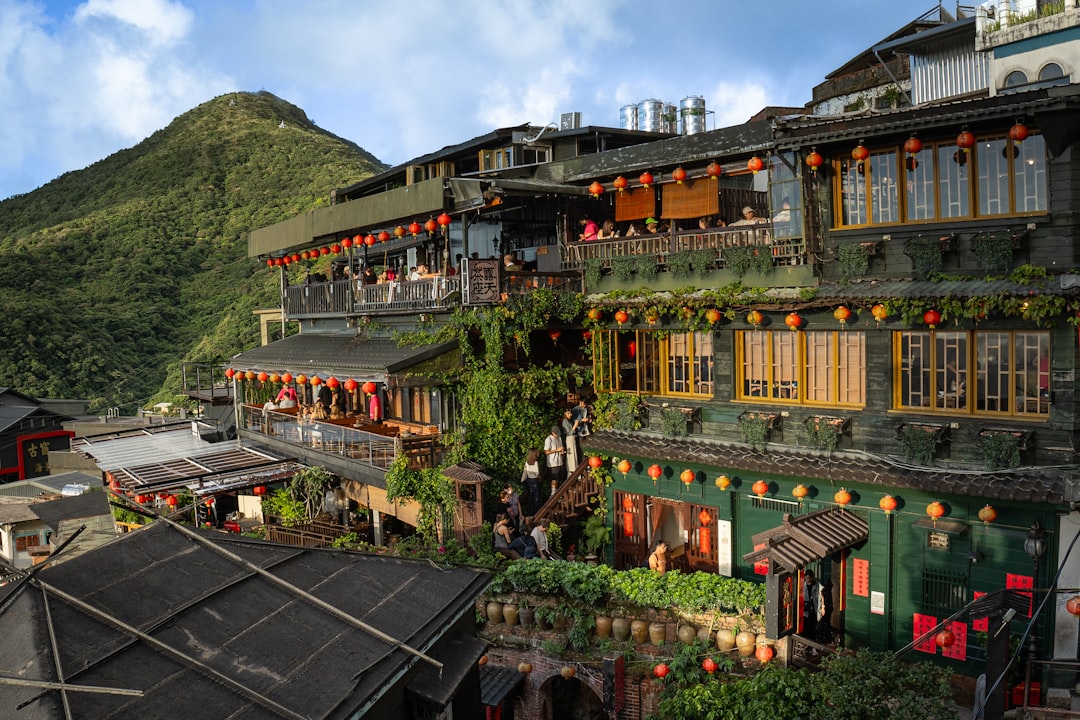The enchanting landscapes depicted in Hayao Miyazaki’s “My Neighbor Totoro” are deeply rooted in the real-life countryside of Japan, particularly in the Saitama Prefecture. The film captures the essence of rural Japan during the post-war era, a time when the country was transitioning from its traditional agrarian roots to a more modern society. The lush greenery, sprawling rice fields, and quaint farmhouses that populate the film are reminiscent of the actual scenery found in places like Tokorozawa, where Miyazaki spent his childhood.
This region is characterized by its rolling hills, dense forests, and a rich tapestry of flora and fauna that serve as a backdrop for the film’s magical narrative.
The characters’ interactions with nature reflect a deep-seated appreciation for the environment, which is a recurring theme in Miyazaki’s works.
The iconic scenes featuring Totoro and the Catbus traversing through the verdant landscapes evoke a sense of nostalgia and wonder, inviting viewers to reconnect with their own childhood experiences in nature. The real-life countryside of Totoro not only serves as a picturesque setting but also embodies the spirit of community and familial bonds that are central to the film’s narrative.
Key Takeaways
- The countryside of Totoro, located in Sayama Hills, inspired the setting for My Neighbor Totoro, with its lush greenery and serene atmosphere.
- The historic town of Colmar in France served as the inspiration for the setting of Howl’s Moving Castle, with its charming medieval architecture and picturesque canals.
- Tomonoura, a seaside town in Japan, was the model for Ponyo’s coastal setting, with its beautiful harbor and traditional fishing village.
- The ancient forests of Yakushima, known for their moss-covered trees and mystical atmosphere, provided the real-life inspiration for Princess Mononoke’s setting.
- The Italian countryside, particularly Tuscany, influenced the setting of Porco Rosso with its rolling hills, vineyards, and rustic charm.
How the Historic Town of Colmar Inspired the Setting of Howl’s Moving Castle
Architectural Inspiration
The town’s architecture, characterized by its colorful facades and intricate details, mirrors the fantastical elements found in Howl’s castle itself. The blend of Gothic and Renaissance styles creates an enchanting atmosphere that transports viewers into a world where magic and reality intertwine seamlessly.
Cultural Heritage
Colmar’s rich history and cultural heritage also play a crucial role in shaping the film’s aesthetic. The town is steeped in Alsatian traditions, which are reflected in its culinary delights, local festivals, and artisanal crafts. This cultural backdrop enriches the narrative of “Howl’s Moving Castle,” as it emphasizes themes of identity, belonging, and the passage of time.
A Sense of Nostalgia and Adventure
The winding canals that traverse Colmar evoke a sense of nostalgia and adventure, paralleling Sophie’s journey as she navigates her transformation and self-discovery. By drawing inspiration from Colmar, Miyazaki not only creates a visually stunning world but also infuses it with a sense of history and depth that resonates with audiences.
Exploring the Seaside Town of Tomonoura, the Model for Ponyo’s Coastal Setting

Tomonoura, a charming seaside town located in Hiroshima Prefecture, served as a significant inspiration for the coastal setting of “Ponyo.” This picturesque fishing village is characterized by its stunning views of the Seto Inland Sea, traditional wooden houses, and vibrant fishing culture. The serene beauty of Tomonoura is captured in “Ponyo,” where the ocean plays a pivotal role in the story. The film’s depiction of the sea—its shimmering waves, colorful marine life, and ever-changing moods—reflects Tomonoura’s own relationship with the water, which has sustained its inhabitants for generations.
The town’s unique geography, with its rocky shorelines and lush greenery, provides a perfect backdrop for Ponyo’s adventures. The film captures the essence of childhood wonder and exploration, mirroring the experiences of children growing up in coastal communities like Tomonoura. The interactions between Ponyo and her human friend Sosuke echo the innocence and curiosity that define childhood friendships.
Moreover, Tomonoura’s rich maritime traditions are woven into the narrative, highlighting themes of connection to nature and the importance of preserving our environment. By grounding “Ponyo” in this real-life setting, Miyazaki not only creates a visually captivating world but also emphasizes the significance of our relationship with nature.
The Ancient Forests of Yakushima: The Real-Life Inspiration for Princess Mononoke
Yakushima, an island located off the southern coast of Japan, is renowned for its ancient cedar forests and rich biodiversity. This UNESCO World Heritage site served as a profound source of inspiration for Miyazaki’s “Princess Mononoke.” The island’s lush landscapes, characterized by towering trees that have stood for thousands of years, embody the themes of nature and environmentalism that permeate the film. The mystical aura of Yakushima is palpable; its dense forests are shrouded in mist and home to diverse wildlife, creating an otherworldly atmosphere that resonates with the film’s narrative.
In “Princess Mononoke,” the conflict between industrialization and nature is central to the story. The portrayal of Yakushima’s pristine environment serves as a stark contrast to the destructive forces represented by ironworks and human encroachment. Miyazaki’s depiction of forest spirits and animal gods draws directly from Yakushima’s rich folklore and spiritual significance.
The island’s ancient trees symbolize resilience and wisdom, mirroring the character of Ashitaka as he seeks to understand and mediate between conflicting worlds. By immersing viewers in Yakushima’s breathtaking landscapes, Miyazaki not only highlights the beauty of nature but also raises awareness about environmental conservation and our responsibility to protect it.
Visiting the Italian Countryside: The Influence of Tuscany on the Setting of Porco Rosso
The idyllic landscapes of Tuscany have long captivated artists and storytellers alike, making it an ideal inspiration for Miyazaki’s “Porco Rosso.” This animated film transports viewers to a world where anthropomorphic pigs soar through the skies over sun-drenched hills dotted with cypress trees and charming villas. The rolling hills and vibrant fields depicted in “Porco Rosso” reflect Tuscany’s rich agricultural heritage and picturesque scenery. The film captures not only the visual beauty of this region but also its cultural essence—an appreciation for craftsmanship, tradition, and a slower pace of life.
Miyazaki’s portrayal of aviation in “Porco Rosso” is intricately tied to Tuscany’s historical significance as a hub for aviation pioneers during the early 20th century. The film’s protagonist, Marco Pagot—who has been transformed into a pig—embodies both nostalgia for a bygone era and a longing for adventure. The coastal towns depicted in the film echo those found along Tuscany’s shores, where fishermen and aviators coexist in harmony with nature.
The Scottish Highlands: The Real-Life Inspiration for the Setting of The Secret World of Arrietty

The rugged beauty of the Scottish Highlands served as an influential backdrop for Miyazaki’s “The Secret World of Arrietty.” This region is characterized by its dramatic landscapes—towering mountains, deep lochs, and sprawling moors—that evoke a sense of mystery and adventure. In “Arrietty,” these elements are mirrored in the film’s portrayal of nature as both enchanting and perilous. The story follows Arrietty, a tiny girl living beneath the floorboards of a house, who embarks on adventures that highlight her connection to both her home environment and the larger world outside.
The Highlands’ rich folklore and traditions resonate throughout “The Secret World of Arrietty,” particularly in its themes of coexistence between humans and nature. The film captures moments that reflect the Highlands’ ethereal beauty—mist-covered hillsides and vibrant flora that create an immersive experience for viewers. Arrietty’s interactions with her surroundings echo the deep-rooted connection that many people feel towards their homeland.
By drawing inspiration from this majestic landscape, Miyazaki crafts a narrative that celebrates not only the wonders of nature but also the importance of understanding our place within it. In each instance where Miyazaki draws from real-life locations to create his animated worlds, he weaves together elements of culture, history, and environmental consciousness. These inspirations not only enhance the visual storytelling but also invite audiences to reflect on their own relationships with nature and community.
Through these vivid landscapes—from rural Japan to coastal towns in France—Miyazaki crafts narratives that resonate across cultures while celebrating the beauty found in our world.
If you’re a fan of Studio Ghibli films and are interested in real-life locations that inspired them, you may also enjoy reading about the perfect combination of fruit, apple, animals, and yogurt parfait. This article explores the delicious and nutritious benefits of combining these ingredients in a tasty treat. Check it out here.
FAQs
What are some real-life locations that inspired Studio Ghibli films?
Some real-life locations that inspired Studio Ghibli films include the historic town of Colmar in France, which inspired the setting for “Howl’s Moving Castle,” and the ancient forests of Yakushima in Japan, which served as the inspiration for the forest in “Princess Mononoke.”
How did these real-life locations inspire Studio Ghibli films?
The natural beauty and unique architecture of these real-life locations served as inspiration for the fantastical worlds depicted in Studio Ghibli films. The filmmakers often drew from the atmosphere, colors, and details of these locations to create their animated settings.
Are these real-life locations open to the public?
Yes, many of the real-life locations that inspired Studio Ghibli films are open to the public and can be visited by fans of the films. Visitors can explore these locations and see firsthand the landscapes and buildings that influenced the iconic animated worlds of Studio Ghibli.
Are there any other real-life locations that inspired Studio Ghibli films?
Yes, there are several other real-life locations that inspired Studio Ghibli films. For example, the seaside town of Tomonoura in Japan inspired the setting for “Ponyo,” while the historic town of Kastoria in Greece served as the inspiration for the town in “Kiki’s Delivery Service.”






















+ There are no comments
Add yours